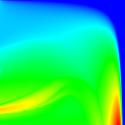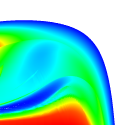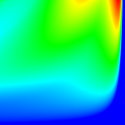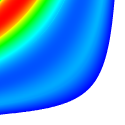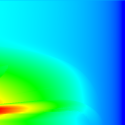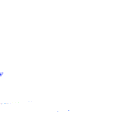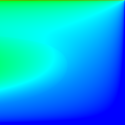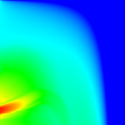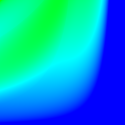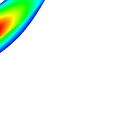A stage-structured discrete population model
with harvesting.
Results of computations
This website contains additional interactive information
and raw data referred to in the paper
Global dynamics in a stage-structured
discrete population model with harvesting
by Eduardo Liz and Paweł Pilarczyk,
published in Journal of Theoretical Biology,
Vol. 297 (2012), pp. 148-165.
These computations were done
for the following 2-dimensional system:
An+1 =
(1 – hj) sj
Jn +
(1 – ha) sa
An
Jn+1 =
g ((1 – ha) An)
with the Ricker map g (x) = α x
e–βx
where An, Jn –
the amounts of adults and juveniles in the n-th generation,
with the following meaning of the parameters:
ha, hj –
harvesting rates for adults and juveniles, respectively
sa, sj –
survival rates of adults and juveniles, respectively
α = er – parameter affecting the dynamics;
fixed for r := 4
β – phase space scaling parameter;
fixed as β := α / e
Continuation diagrams
Continuation diagrams for the six cases under consideration
were computed as described in the paper,
using an updated version of the
Conley-Morse
Graphs software (available from the author upon request).
The parameter space [0,1] x [0,1] was sampled at 500 x 500.
The phase space [0,1.35] x [0,1.35] was sampled at 1024 x 1024.
Each continuation diagram shows the respective harvesting rate
in the horizontal axis, and the survival rate
in the vertical axis.
The CPU time information is provided
for a Quad-Core AMD Opteron™ Processor 2376 2.3 GHz
(ca. 4600 bogomips).
Memory usage information is approximate and was measured
for the program compiled for the amd64 architecture
with the GNU C++ 4.1.2 compiler.
The phase space shows the adult population size
(An) in the horizontal axis,
and the juvenile population size (Jn)
in the vertical axis.
Each clickable diagram that loads when the corresponding link is clicked,
allows to browse the results of computations
by individual parameter boxes. An extra large version is provided
to allow clicking parameter boxes more precisely,
e.g., in order to check very small continuation classes.
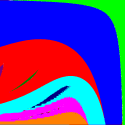
[clickable diagram]
[extra large
version] |
Case Ha–S1
hj = 0,
sj = 1 – sa
varying parameters: ha, sa
2,929 hours of CPU time
1,767 MB memory max |
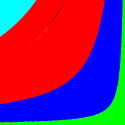
[clickable diagram]
[extra large
version] |
Case Ha–Se
hj = 0,
sj = sa
varying parameters: ha, sa
2,533 hours of CPU time
1,345 MB memory max |
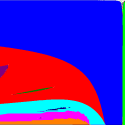
[clickable diagram]
[extra large
version] |
Case Hj–S1
ha = 0,
sj = 1 – sa
varying parameters: hj, sa
1,410 hours of CPU time
607 MB memory max |
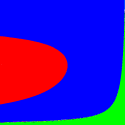
[clickable diagram]
[extra large
version] |
Case Hj–Se
ha = 0,
sj = sa
varying parameters: hj, sa
1,115 hours of CPU time
220 MB memory max |
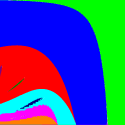
[clickable diagram]
[extra large
version] |
Case He–S1
hj = ha,
sj = 1 – sa
varying parameters: ha, sa
1,349 hours of CPU time
780 MB memory max |
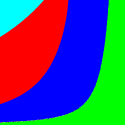
[clickable diagram]
[extra large
version] |
Case He–Se
hj = ha,
sj = sa
varying parameters: ha, sa
1,169 hours of CPU time
405 MB memory max |
Averaged hydra effect analysis

Linear
color scale from the lowest values (blue) to the highest ones (red).
Numerical bubble effect analysis
Case
Ha–S1 |
|
Case
Ha–Se |
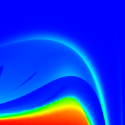
[attractor size]
1 – 610,743 |
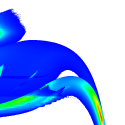
[bubble effect]
100% – 6,141.26% |
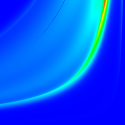
[attractor size]
1 – 326,395 |
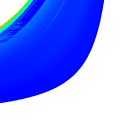
[bubble effect]
100% – 8,931.06% |
Case
Hj–S1 |
Case
Hj–Se |
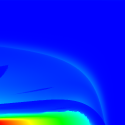
[attractor size]
55 – 607,621 |
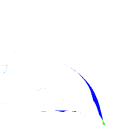
[bubble effect]
100% – 2,005.25% |
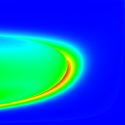
[attractor size]
14 – 69,171 |
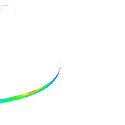
[bubble effect]
100% – 145.042% |
Case
He–S1 |
Case
He–Se |
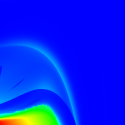
[attractor size]
1 – 610,743 |
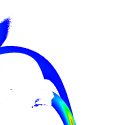
[bubble effect]
100% – 5,234.5% |
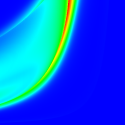
[attractor size]
1 – 132,579 |
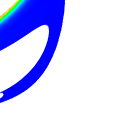
[bubble effect]
100% – 62,601% |

Linear
color scale from the lowest values (blue) to the highest ones (red).






